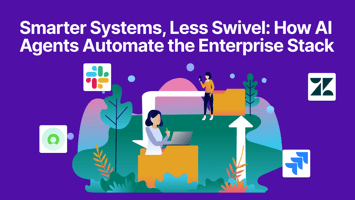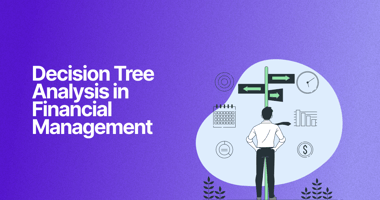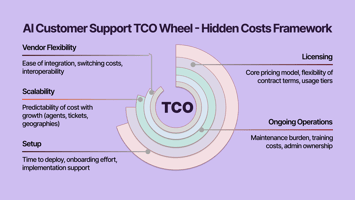From Chatbots to Agents: The Enterprise Shift Has Begun The hype around AI in the workplace often...
What is Digital Twin Technology?
A digital twin is a virtual model that represents a physical object, system, or process. It simulates the behavior, features, & performance of its real-world counterpart within a virtual environment. Digital twins are usually developed using data gathered from sensors, IoT devices, and other sources. They utilize technologies like simulation, machine learning, and analytics to mirror the physical entity.
Digital twins find applications across various industries and domains, including manufacturing, healthcare, transportation, energy, and urban planning. Examples of digital twins range from individual components and products to entire factories, cities, and ecosystems. The adoption of digital twins is driven by their ability to improve efficiency, optimize performance, reduce costs, enhance safety, and drive innovation in diverse fields.
Key Characteristics of Digital Twins
Real-time Monitoring: Digital twins continuously collect and analyze data from their physical counterparts, providing real-time insights into their performance, condition, and behavior.
Predictive Analytics: By analyzing historical data and using predictive modeling techniques, digital twins can forecast future behavior, anticipate potential issues, and optimize performance.
Remote Control and Management: Digital twins enable remote monitoring, control, and management of physical assets and systems, allowing operators to make informed decisions and take actions without physically being present.
Virtual Testing and Simulation: Digital twins provide a virtual environment for testing and simulating different scenarios, configurations, and operating conditions, reducing the need for physical prototypes and experiments.
Lifecycle Management: Digital twins support the entire lifecycle of physical assets and systems, from design and development to operation, maintenance, and decommissioning. They facilitate collaboration among stakeholders and enable data-driven decision-making throughout the lifecycle.
Types of Digital Twins
Product: Product twins represent individual physical products or components in a virtual environment. They capture detailed information about the design, specifications, performance, and maintenance history of the product. Product twins are commonly used in manufacturing, aerospace, automotive, and consumer goods industries to optimize product design, manufacturing processes, and after-sales service.
Process: Process twins model and simulate complex manufacturing processes, supply chains, and operations. They capture data from various sensors, equipment, and production systems to monitor and analyze process performance, identify inefficiencies, and optimize workflows. Process twins are used in industries such as manufacturing, energy, chemical, and logistics to improve operational efficiency and resource utilization.
Asset: Asset twins represent physical assets such as machinery, equipment, vehicles, infrastructure, and buildings in a virtual environment. They provide real-time monitoring, predictive maintenance, and performance optimization capabilities to maximize asset uptime and lifespan. Asset twins are commonly used in industries such as manufacturing, transportation, energy, and utilities to reduce downtime, minimize maintenance costs, and enhance asset reliability.
System: System twins model and simulate complex systems composed of interconnected components, subsystems, and processes. They capture data from multiple sources to analyze system behavior, diagnose issues, and optimize performance. System twins are used in industries such as aerospace, defense, automotive, and telecommunications to design, test, and operate complex systems efficiently and safely.
City: City twins represent entire urban ecosystems, including infrastructure, buildings, transportation networks, utilities, and public services, in a virtual environment. They provide city planners, policymakers, and stakeholders with insights into urban dynamics, demographics, and sustainability challenges. City twins are used in urban planning, infrastructure development, and smart city initiatives to improve livability, resilience, and sustainability.
Human: Human twins represent individuals, including their physical characteristics, behaviors, preferences, and health status, in a virtual environment. They leverage data from wearable devices, health records, and other sources to monitor and analyze individual health and well-being. Human twins are used in healthcare, fitness, and personalized medicine to support diagnosis, treatment, and preventive care.
Enterprise: Enterprise twins represent entire organizations, including their assets, processes, and stakeholders, in a virtual environment. They provide executives, managers, and decision-makers with insights into organizational performance, risks, and opportunities. Enterprise twins are used in business intelligence, strategic planning, and organizational optimization to drive growth, innovation, and competitive advantage.
The Benefits of Digital Twin Technology
Digital twins play a crucial role in driving digital transformation, improving operational efficiency, and unlocking new opportunities for innovation and growth across industries and domains. Their ability to provide a virtual representation of physical assets and systems, coupled with advanced analytics and simulation capabilities, makes them indispensable tools for organizations seeking to thrive in today's dynamic and competitive business landscape.
Optimizing Performance: By providing real-time insights and predictive analytics, digital twins enable organizations to optimize the performance of their assets, processes, and systems. This optimization leads to increased efficiency, productivity, and reliability.
Reducing Downtime: Digital twins help identify potential issues and anomalies before they escalate into downtime or failures. By monitoring the condition and behavior of physical assets in real time, organizations can implement proactive maintenance strategies and minimize unplanned downtime.
Improving Decision-Making: Digital twins provide stakeholders with a comprehensive understanding of their assets and operations, empowering them to make data-driven decisions. Whether it's optimizing production schedules, allocating resources, or mitigating risks, digital twins enable informed decision-making across various domains.
Enhancing Collaboration: Digital twins facilitate collaboration among different teams, departments, and stakeholders involved in the lifecycle of physical assets. By providing a common virtual environment for data sharing, visualization, and analysis, digital twins break down silos and foster collaboration and innovation.
Enabling Remote Monitoring and Control: With the rise of IoT devices and connectivity, digital twins enable remote monitoring, control, and management of physical assets and systems. This capability is particularly valuable in scenarios where physical access is limited or hazardous, allowing operators to monitor and intervene from a safe distance.
Supporting Innovation and Iteration: Digital twins provide a platform for testing, simulation, and experimentation, enabling organizations to innovate and iterate rapidly. Whether it's designing new products, optimizing processes, or exploring alternative scenarios, digital twins accelerate the innovation cycle and drive continuous improvement.
Enhancing Safety and Sustainability: By proactively monitoring and managing assets, digital twins contribute to enhancing safety, reducing risks, and ensuring regulatory compliance. Additionally, digital twins support sustainability initiatives by optimizing resource usage, reducing waste, and minimizing environmental impact.


